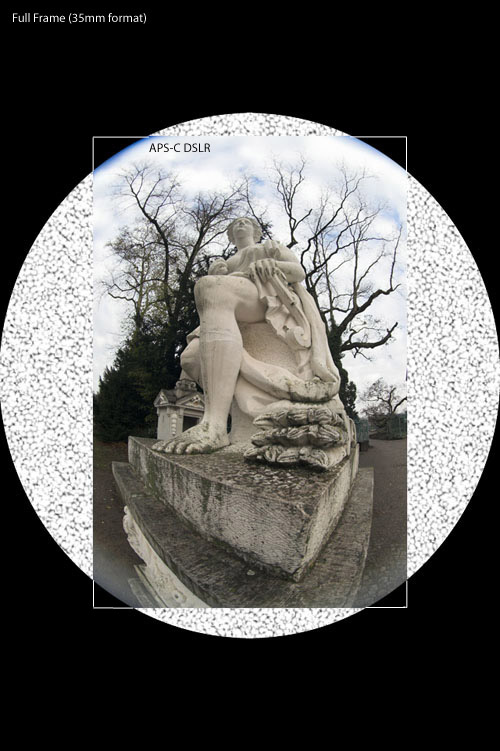|
Page 1 of 3
Review by Klaus Schroiff, publsihed December 2005
Special thanks to Thijs Terlouw for providing this lens!
Introduction
The Peleng 8mm f/3.5 Fisheye is a rather unusual lens. Besides being
a rare circular fisheye lens manufacturer by the rather unknown Belarus company
Peleng it doesn't features any electronic coupling so it neither provides
AF nor a camera controlled aperture mechanism. It has a native
M42 mount but it can be used easily on most (D)SLRs via dedicated adapters. Some
dealers also offer transformed versions which can be used directly on some
camera systems like an EOS version used in the scope of this review (using
an EOS 350D here). The lens costs something around 150-250 EUR/US$
at eBay or via specialty dealers so it's quite a bargain compared to
genuine manufacturer fisheye lenses.

Thanks to the extreme depth-of-field the lack of AF doesn't really matter -
guessing the focus distance via the well damped manual focus ring is usually
well sufficient. Due to the non-existing coupling of the aperture mechanism
you have to spend some more thoughts here because the camera isn't even
aware that a lens is mounted in the first place so it will only show
you f/0.0 (or some other default aperture dependent on the specific camera
model) and obviously this will not change when stopping down the aperture.
Canon EOS and Minolta Dynax/Maxxum users may need to get used to the aperture
ring on the lens rather than controlling it via the camera but naturally that's
no science fiction.
The Peleng has two control rings for the aperture mechanism. With the first
(classic) one you actually set the aperture whereas the second one (LOCK/UNLOCK)
allows you to shift between the selected aperture and max. aperture.
This may sound like an odd concept but it makes sense because the viewfinder
image gets instantly darker with smaller aperture settings - remember that
the aperture mechanism is totally independent from the camera.
A typical workflow for using the lens may be as follows:
- select either manual or aperture priority mode on the camera
- guess the focus distance via the focus ring on the lens
- set the preferred aperture via the standard aperture ring, close the LOCK/UNLOCK ring and adjust the metering
- use the LOCK/UNLOCK ring to open the aperture again and compose your scene in detail
- close aperture via the LOCK/UNLOCK ring again (it stops at the initially selected aperture) and take your image
(on full frame or 1.3x DSLRs you should also select spot or partial metering)
This may sound complicated but it really isn't. After a couple of shots you
should get used to the procedure. It is worth to mention that the EOS 350D/Digital Rebel
XT produced over-exposed results at f/3.5 but the metering was fine from f/5.6 and up.
The Peleng is a circular fisheye lens so on full frame (D)SLRs
the image field covers a circular inner portion whereas
on APS-C DSLRs it is almost a full frame fisheye with dark corners(see below - the
dotted part of the circle would naturally contain the rest of the image on a full frame
camera).

The optical design of the lens is made of 11 elements in 7 groups without
any special elements. Due to the extreme angle of view (180 degrees in diameter)
and the circular image field it is not possible to use any front filters.
This is a little critical because the huge front element is very vulnerable
to scratches - more so because the protective cap cannot be locked securely.
The lens has an aperture range from f/3.5 to f/16 and
the aperture mechanism has 9 aperture blades. With a min. focus distance
of 0.22mm the max. object magnification translates to 1:7.7. It is a
very compact lens at only 73x66mm. It is a pretty tough construction
with an outer barrel primarily made of metal so it is comparatively
heavy at about 370g. The package also includes a soft bag.
|